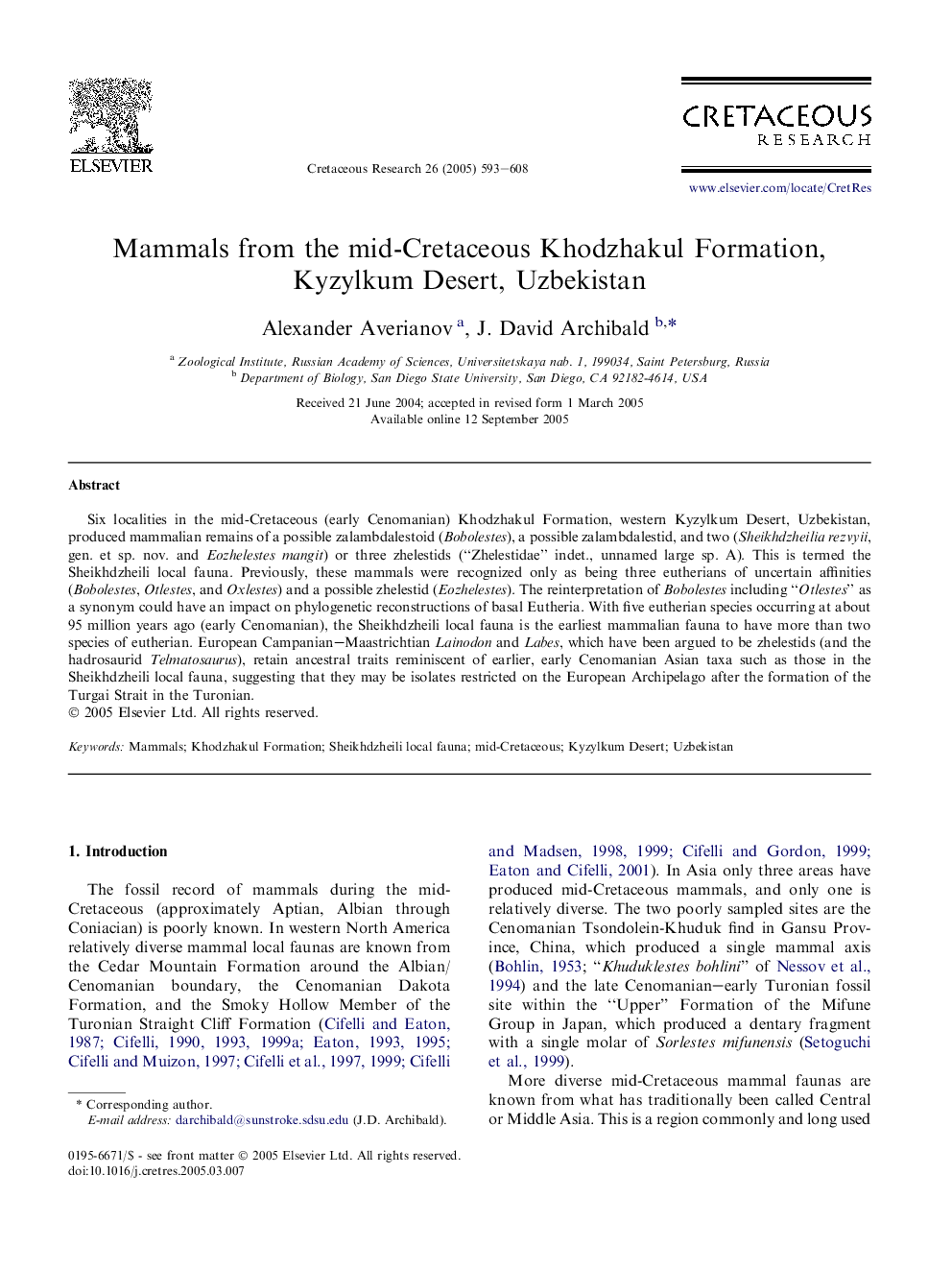| کد مقاله | کد نشریه | سال انتشار | مقاله انگلیسی | نسخه تمام متن |
|---|---|---|---|---|
| 9539052 | 1359963 | 2005 | 16 صفحه PDF | دانلود رایگان |
عنوان انگلیسی مقاله ISI
Mammals from the mid-Cretaceous Khodzhakul Formation, Kyzylkum Desert, Uzbekistan
دانلود مقاله + سفارش ترجمه
دانلود مقاله ISI انگلیسی
رایگان برای ایرانیان
موضوعات مرتبط
مهندسی و علوم پایه
علوم زمین و سیارات
فسیل شناسی
پیش نمایش صفحه اول مقاله

چکیده انگلیسی
Six localities in the mid-Cretaceous (early Cenomanian) Khodzhakul Formation, western Kyzylkum Desert, Uzbekistan, produced mammalian remains of a possible zalambdalestoid (Bobolestes), a possible zalambdalestid, and two (Sheikhdzheilia rezvyii, gen. et sp. nov. and Eozhelestes mangit) or three zhelestids (“Zhelestidae” indet., unnamed large sp. A). This is termed the Sheikhdzheili local fauna. Previously, these mammals were recognized only as being three eutherians of uncertain affinities (Bobolestes, Otlestes, and Oxlestes) and a possible zhelestid (Eozhelestes). The reinterpretation of Bobolestes including “Otlestes” as a synonym could have an impact on phylogenetic reconstructions of basal Eutheria. With five eutherian species occurring at about 95 million years ago (early Cenomanian), the Sheikhdzheili local fauna is the earliest mammalian fauna to have more than two species of eutherian. European Campanian-Maastrichtian Lainodon and Labes, which have been argued to be zhelestids (and the hadrosaurid Telmatosaurus), retain ancestral traits reminiscent of earlier, early Cenomanian Asian taxa such as those in the Sheikhdzheili local fauna, suggesting that they may be isolates restricted on the European Archipelago after the formation of the Turgai Strait in the Turonian.
ناشر
Database: Elsevier - ScienceDirect (ساینس دایرکت)
Journal: Cretaceous Research - Volume 26, Issue 4, August 2005, Pages 593-608
Journal: Cretaceous Research - Volume 26, Issue 4, August 2005, Pages 593-608
نویسندگان
Alexander Averianov, J. David Archibald,